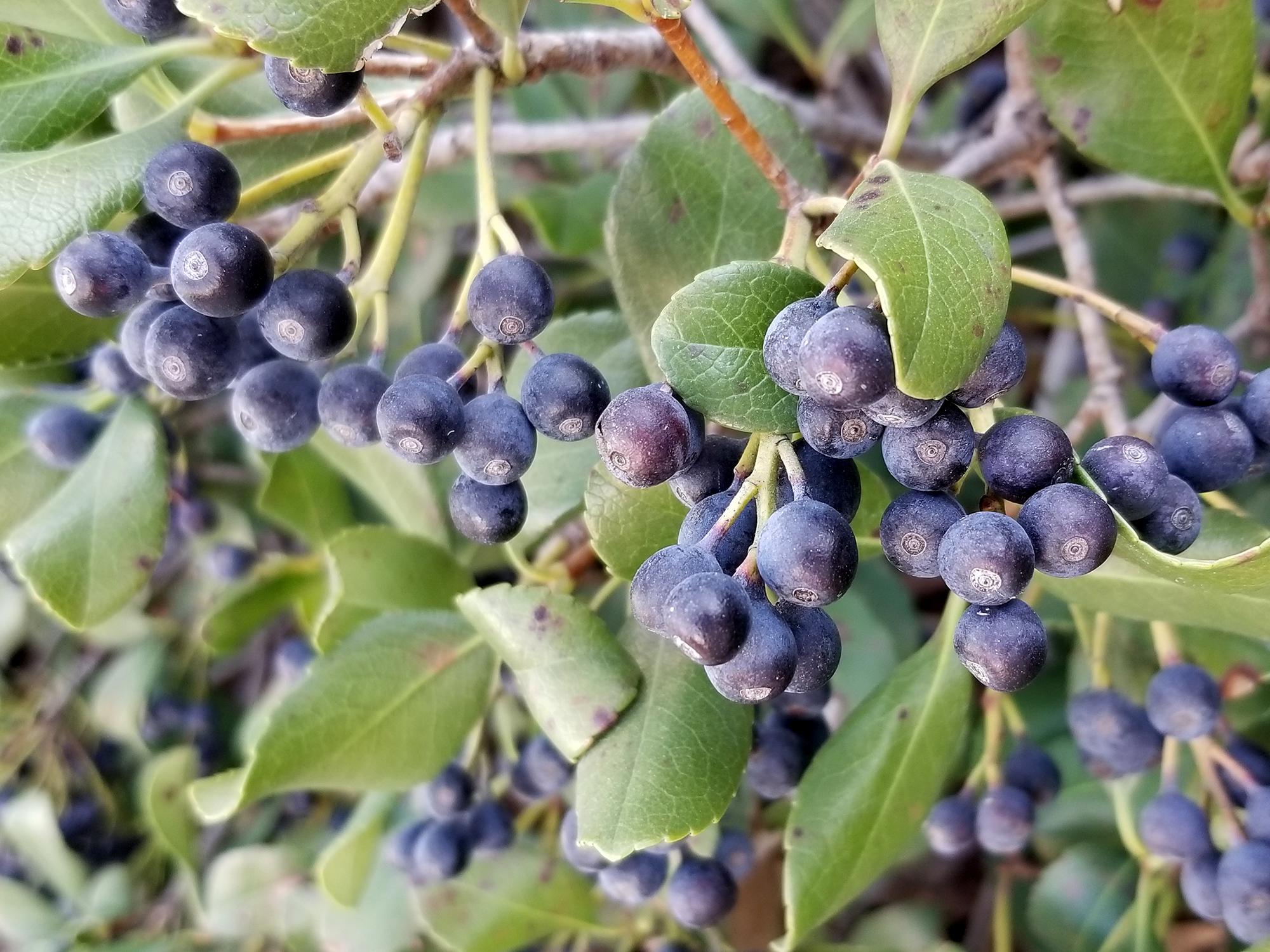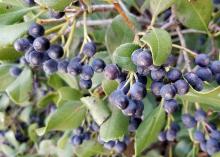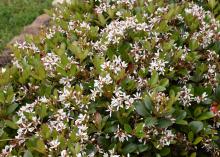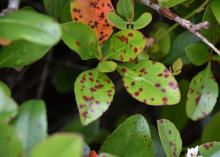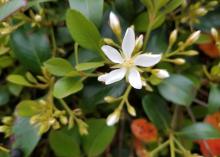Information Possibly Outdated
The information presented on this page was originally released on February 25, 2019. It may not be outdated, but please search our site for more current information. If you plan to quote or reference this information in a publication, please check with the Extension specialist or author before proceeding.
Add Indian hawthorn for spring flowering
I join the gardening world in waiting for the Southern indica azaleas to officially kick off the spring season with their gaudy show of beautiful color. But there's one landscape shrub that tends to get lost when the azaleas start showing off, and it is actually one of my spring-flowering favorites.
This week, I want to tell you about the Indian hawthorn.
Some gardeners think Indian hawthorn is a ho-hum, no-pizzazz shrub. But this plant is so much more than some of the prima donna shrubs that garner all the attention each spring. An accurate way to describe these shrubs is to say they are hard-working don’t complain much about how they’re treated. They are so pedestrian, so blue collar.
But when you actually look for them, you’ll find Indian hawthorns are in almost every south Mississippi landscape as foundation anchor shrubs. That’s because they’re reliable, and every home gardener wants reliability in their landscape. The Indian Hawthorn is the perfect evergreen shrub to plant in your home landscape in hardiness zones 7a through 10.
Star-shaped flowers ranging from snow white to light-pastel pink emerge in the spring in clusters held loosely at the ends of branches. On calm springs days, you may catch a hint of their delicate floral fragrance when you stroll by a hedge in bloom. The pistil and stamens are reddish, matching the color of the newly unfolding foliage. This feature adds additional interest and contrast to the flower color.
Indian hawthorn is not just a hard-working spring shrub. It also gets the job done in the summer and fall, too.
Thick and leathery evergreen foliage provides a fantastic backdrop for warm-season annual color. The top of the foliage is a lustrous dark green in the summer, and it can turn a purplish blue-green when exposed to winter temperatures. The leaf margins have soft, serrated edges that are highly variable.
This shrub’s only real problem is that the foliage is susceptible to Entomosporium leaf spot.
Gardeners can take some of the blame because we like to mass plant Indian hawthorn. Preventive sprays with fungicides containing chlorothalonil or propiconazole can help in the spring and fall. The pathogen survives in leaf litter, so it is a good idea to clean up the fallen leaves from around the plants to help prevent the spread of this disease.
In the fall, Indian hawthorns produce fruit that are an attractive blue to black color. They ripen in the late summer and fall and persist through the winter.
Plant Indian hawthorn in full sun to partial shade. It prefers a consistently moist but well-drained landscape bed. To help ensure adequate drainage, plant the crown 1 or 2 inches above the soil level for the best landscape performance. Indian hawthorn tolerates pruning especially well, making it is easy to keep it less than 3 feet tall in the landscape.
So, if your landscape needs a boost from spring-blooming shrubs, consider Indian hawthorn selections when you go shopping at the local garden center.

